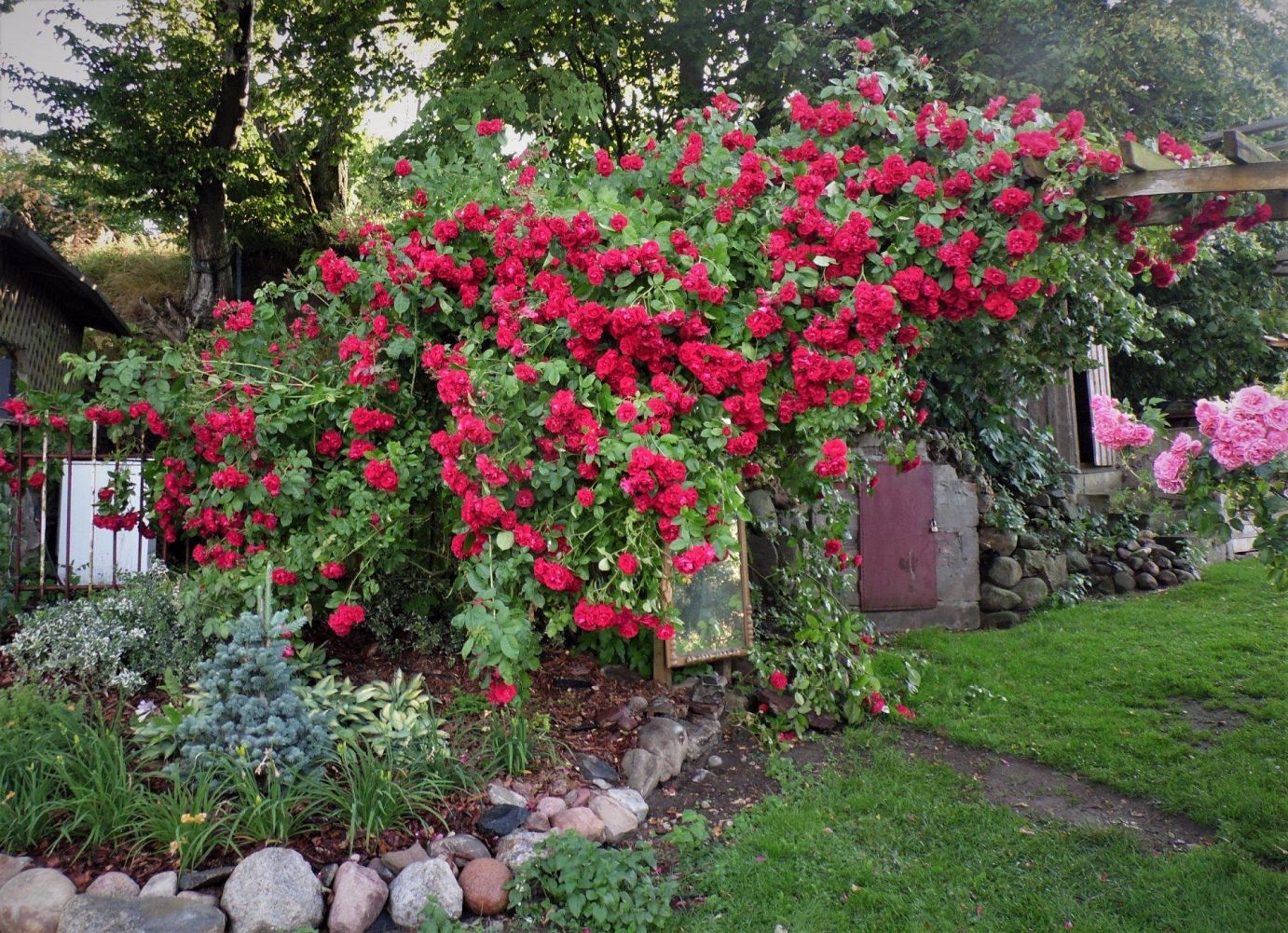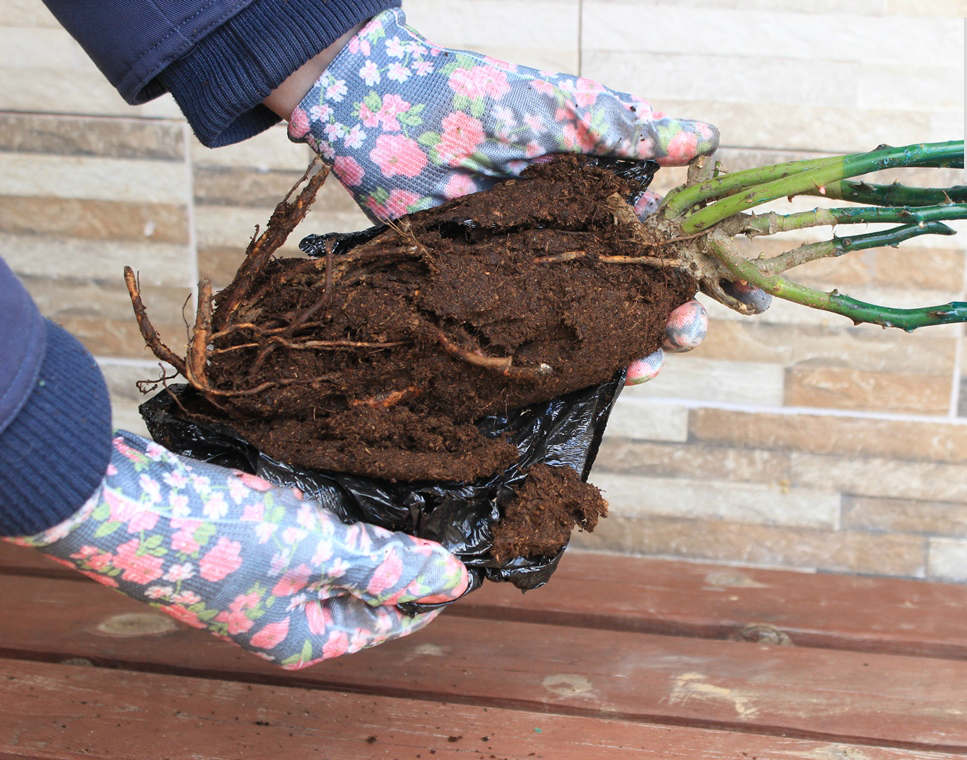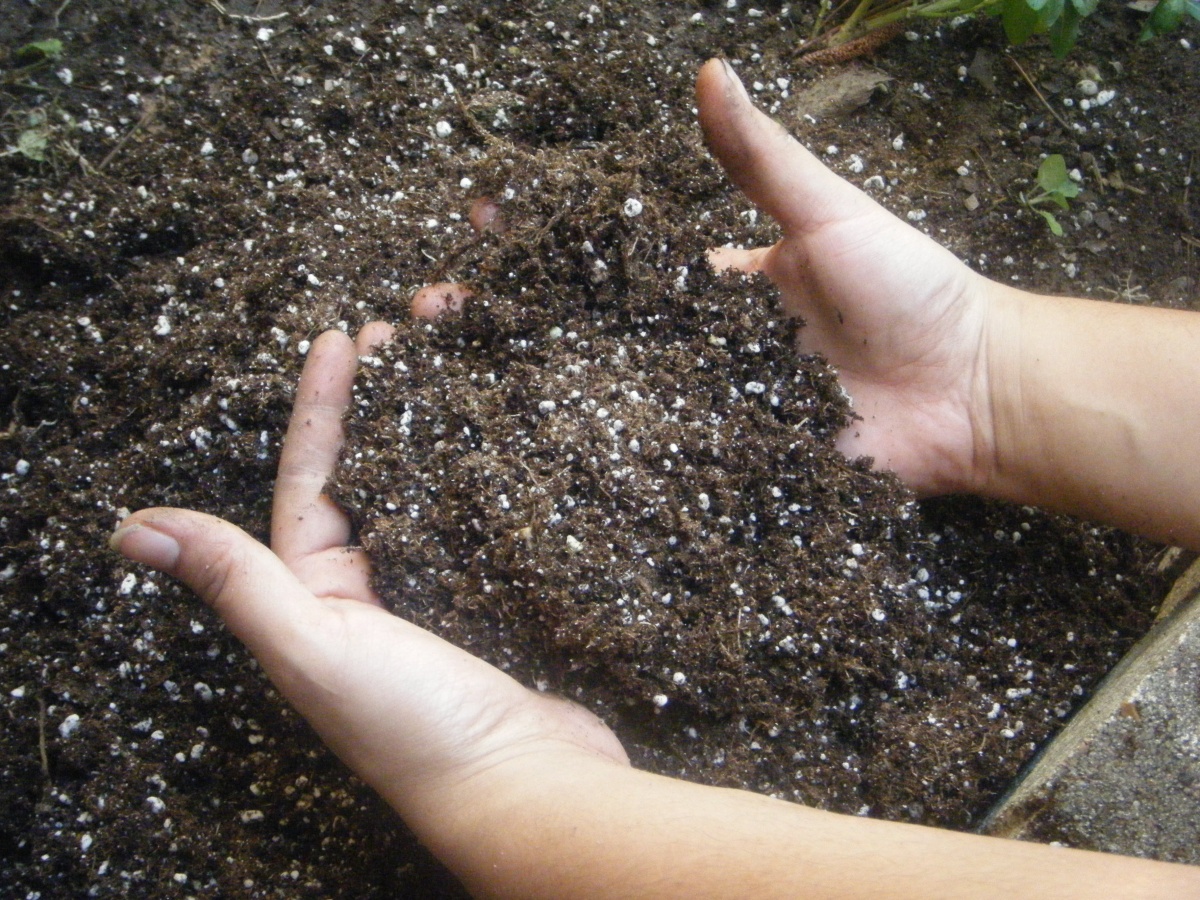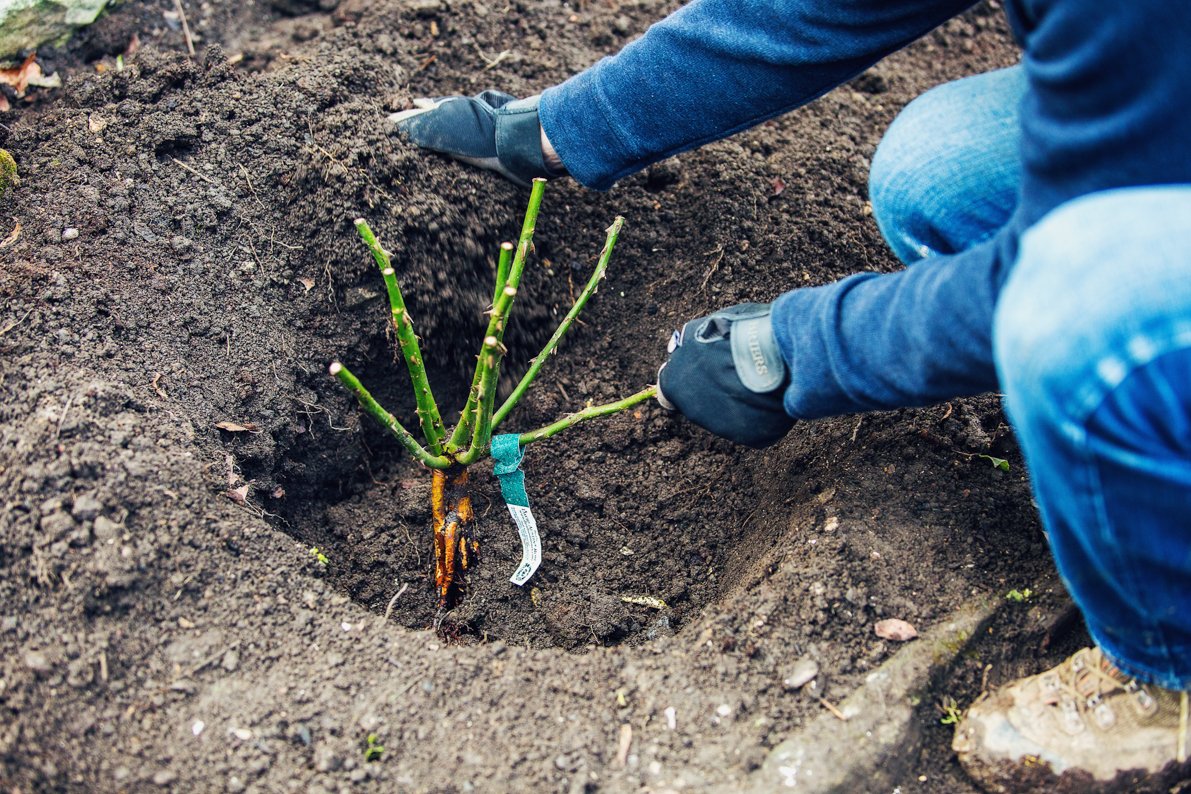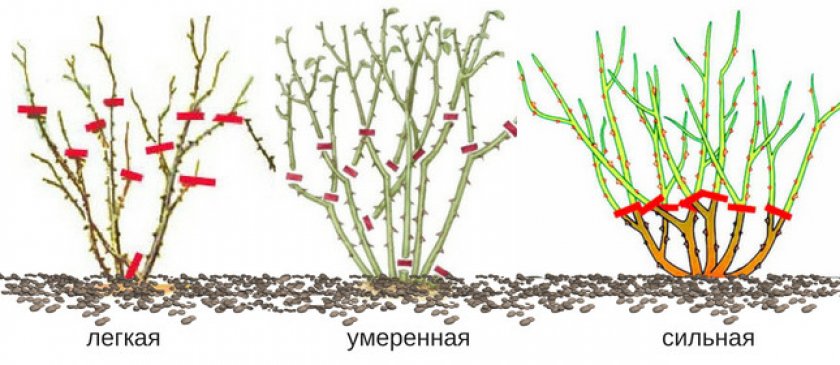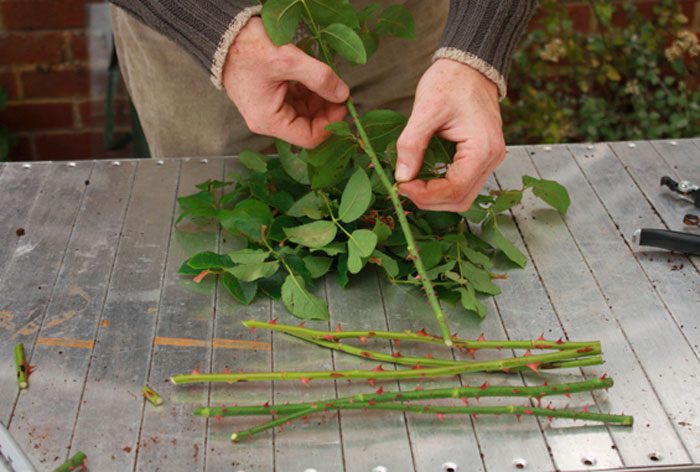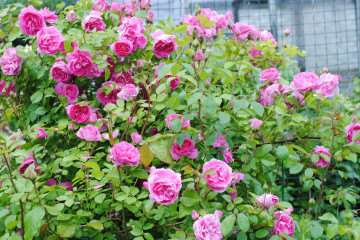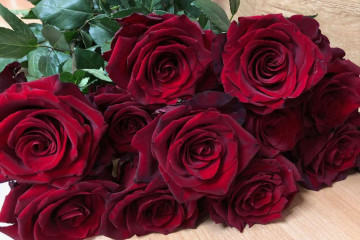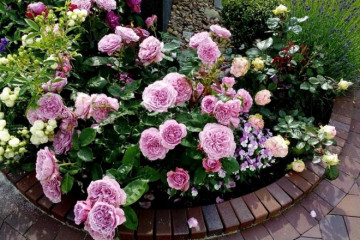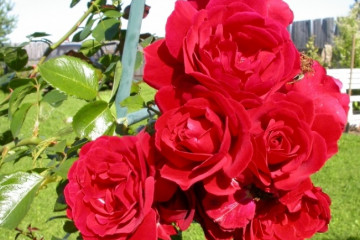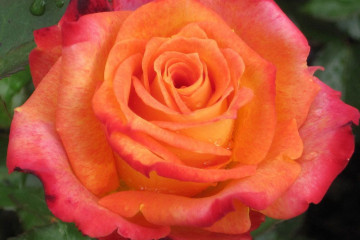Rose John Franklin
Content:
The use of flowers to decorate a personal plot or in an urban landscape does not cease to be relevant. Fashion, preferences change, new plants bred by breeders appear, but no one will ever take the dominant place of the rose.
There are a huge number of varieties of the queen of flowers. For each climate and specific area, you can choose the appropriate one. The John Franklin rose occupies a special place in this family.
Rose John Franklin (John Franklin) - what kind of variety, history of creation
The plant came to us from Canada. Breeders of this country were able to breed a frost-resistant species that can grow even in the Siberian climate. The park variety is unpretentious and very tolerant even to the unfavorable conditions of Russia. It blooms almost without interruption all summer and autumn.
Brief description, characteristic
The bushes of the plant reach 1.5 m. It grows not only in height, but also in breadth. The thorns are olive-colored. The buds are stuffed, rich crimson color. The size of the flower depends on the place of growth, the average is 6-8 cm. In the description, breeders guarantee flower brushes consisting of 30-40 buds.
Advantages and disadvantages of the variety
The advantages are as follows:
- Beautiful and abundant flowering.
- Nice smell.
- Long flowering period of 6 months.
- It tolerates drought painlessly.
- Recovers quickly after severe frosts.
With a large list of positive qualities of this variety, there are only a few disadvantages:
- Thorns. John Franklin is literally stuck with sharp needles.
- Has no immunity and often suffers from black spot.
Use in landscape design
In landscape design, the bush is used both singly and in composition. He is able to become a real decoration of the backyard area. A tall plant looks the most advantageous in the background, for example, near a fence or wall.
A good root system allows this plant to be used even on slopes and irregularities.
Growing a flower, how to plant it in open ground
To grow a beautiful and healthy bush, you need to take the most responsible approach to the choice of planting material.
In what form is the planting carried out (by seeds, seedlings, etc.)
Planting directly into the ground is carried out exclusively by seedlings. They can be grown independently from seeds or purchased from specialized stores.
The optimal age, upon reaching which it is possible to plant, is two years.
What time is the boarding
Planting in open ground should be carried out only after the soil has completely warmed up. The optimum temperature is +10 degrees. The best time for planting is April-May.
Some growers also plant in the fall. In this case, it is important not to be late. The plant must have time to take root before severe frosts.
Location selection
The planting site should be lit for most of the day. But at the same time it is necessary to protect the bush during the sunniest hours. You can use fabrics to create shade.
The proximity of groundwater is undesirable.
How to prepare the soil and flower for planting
Before planting or transplanting any plant on the site, preparatory measures are required:
- All weeds are removed.
- The earth is being dug up.
- If the soil is acidic, it is necessary to normalize the pH with lime.
- Before planting, the roots are soaked in warm water for 2-3 hours.
- Damaged roots must be cut off and treated with any stimulant.
Planting procedure step by step
Roses are endowed with a well-developed root system. Therefore, the pits for planting shrubs should be large, at least 60 cm deep, 1 m wide. The bottom is drained by any available material: brick, pebbles.
A fertile substrate must be prepared in advance. For this, the following ingredients are mixed: black soil - 5 liters, 2 tbsp. bone meal and 0.5 tbsp. superphosphate. This mixture is poured over the drainage and fertile soil is poured on top. After planting the bush, the earth is crushed and thoroughly watered.
Plant care
Timely, and most importantly, competent rose care will allow you to get a beautiful flowering plant without much difficulty.
Watering rules and humidity
The watering rate for each plant is about 10 liters. It is impossible to allow the appearance of a crust on the surface, but pouring is categorically not recommended: high humidity can lead to the appearance of fungal diseases.
Top dressing and soil quality
You need to feed the flower at least three times a year. This variety will gratefully react to urea: the drug promotes a rapid vegetative process. The best time for nitrogen is spring. During the period of active budding, the soil is watered with any complex fertilizer. In this case, it is necessary to use mineral preparations.
To provide warmth in the winter cold and prevent freezing of the root system will allow mulching the earth around the flower with humus.
Pruning and replanting
Sharp and disinfected tools should be used for trimming. It can be a knife or scissors.
Cutting off old and damaged branches is necessary not only for an aesthetic appearance, but also for the health of the plant.
When transplanting, all buds or buds are necessarily cut off, since the rooting process requires a lot of effort.
Features of wintering a flower
In autumn, before the onset of frost, all buds that have not formed are cut off, the earth around the rose is carefully spud and watered.
Depending on the region of growth, it is necessary to decide whether a structure is needed to save the flower from severe frosts. It is best to use agrofiber as a covering material.
Blooming rose
Outwardly, the flowers of the John Franklin variety bear a resemblance to a carnation. The color palette ranges from crimson to dark red. The species is one of the longest flowering members of the family.
A period of activity and rest
The first flowers appear on the rose in April. It blooms very profusely and almost continuously.In the summer, in the hottest months, there is a short period of rest - no more than seven days. Then flowering continues until the very frost.
Care during and after flowering
During the flowering period, it is necessary to maintain a moderate soil moisture. At this time, you should not only water the rose, but also regularly loosen the soil around.
What to do if it does not bloom, possible reasons
Canadian park rose John Franklin is an unpretentious plant, but a gross violation of the rules of agricultural technology can lead not only to a lack of flowers, but also to disease. Most often, the plant does not bloom in the following cases:
- The sanitary pruning was not done according to the rules.
- Preparatory measures for the winter season were not carried out at all or were carried out with violations.
- The improper location of the flower on the site can also lead to the fact that the rose John Franklin
will stop blooming. - Wild appendages growing from the base of the bush must be pruned regularly.
- Flower feeding should be carried out in a timely manner.
- Almost any disease leads to the absence of flowers on a rose.
- Poor quality planting material does not take root well and does not bloom.
- The plant will be weakened and non-flowering if it grows on "poor" soil.
Flower propagation
The plant can be propagated in two ways: by seeds or by cuttings.
The seed method is very laborious and energy-consuming. The main disadvantage is that it is extremely rare for a child to pass on the traits of a parent.
The propagation method using cuttings is more convenient. The probability of rooting is 90%.
When is it produced
The best breeding season is mid-summer. Autumn cuttings require storage conditions: cold room, moderate humidity.
Detailed description
A special box is prepared for planting material, which is filled with fertile soil. The optimum seedling size is 15 cm. All lower leaves are removed and the upper ones are cut in half. Before landing in the ground, it must be thoroughly shed. It is important to achieve a greenhouse effect. The easiest way is to cover the drawer with plastic wrap.
Diseases, pests and ways to control them
The following parasites love the rose:
- aphid;
- mite;
- thrips.
You can save a plant that has fallen in love with insects with the help of any insecticidal preparations.
The fungus damages the flower if the rules of cultivation and care are not followed. For prophylaxis, it is recommended 3-4 times a year to spray with any preparations containing copper.
John Franklin is considered one of the most beautiful of the rose family. He is not capricious, blooms for a long time. Even a novice florist can grow this flower. The main thing is to follow the elementary rules of care and timely monitor all changes in its condition.

